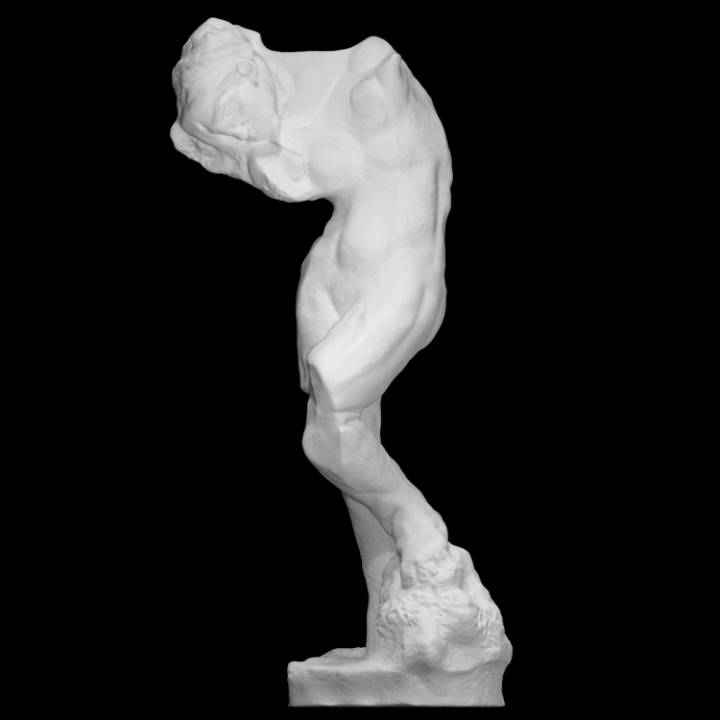
The Inner Voice
myminifactory
Rodin continually explored new avenues within existing projects, revisiting form, scale, material and most crucially, the intention behind his ideas. 'The Muse' originated as a small-scale figure on the tympanum above the bronze 'Gates of Hell' doors for the newly established Museum of Decorative Arts in Paris, which Rodin was commissioned to design in 1880. He later developed the figure into 'The Inner Voice', one of two muses intended for the monument in Paris honoring Victor Hugo, commissioned in 1886. His composition featured a naked Hugo flanked by two naked muses. The commissioners rejected this proposal due to its unsuitability for the proposed location within the Panthéon, although they allowed Rodin to continue with the project. Following numerous revisions, Rodin produced this figure. He severed the arms and removed drapery that covered the knee, signaling an increasingly conceptual approach to sculpture. The poet Rainer Maria Rilke, who worked as Rodin's secretary for a time, wrote of it: 'Again and again in his figures, Rodin returned to this bending inward, to this intense listening to one's own depth... Never was human body assembled about its inner self so intensely, nor bent by its own soul.' Rodin himself stated: 'My figure represents "Meditation". That is why it has no arms to act or legs to walk. Haven't you noticed that reflection, when continued, suggests many plausible arguments for opposite directions, ending in inertia?'
With this file you will be able to print The Inner Voice with your 3D printer. Click on the button and save the file on your computer to work, edit or customize your design. You can also find more 3D designs for printers on The Inner Voice.
